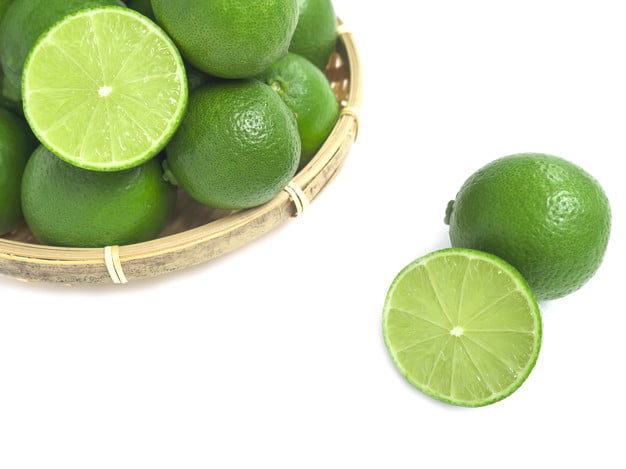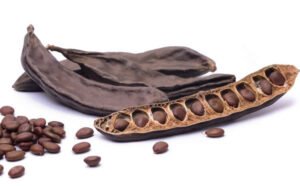Fibroids also called leiomyomas or myomas are non-cancerous growths that grow in or out of the uterus.
They often show no symptoms and can range in size from tiny masses that are undetectable to the human eye to large bulky masses that cause discomfort.
Risk factors of fibroids
Women may be at risk for fibroids if they have any of the following risk factors:
- Obesity
- Family history of fibroids
- African race
- Pregnancy
- Poor diet
- Frequent Exposure to hormone-disrupting chemicals
Causes of fibroids
The causes of fibroids is still unclear, however, research points out the following factors:
- Family history: Fibroid genes may be passed down from your mother or grandmother to you.
- Hormones: Since fibroids tend to shrink during menopause, many doctors have attributed the cause of fibroids in young females to estrogen and progesterone – The female hormones responsible for regulating the menstrual cycle.
- Pregnancy: Pregnancy multiplies the production of estrogen and progesterone in the body which may cause fibroids.
- Obesity: Obese women are at risk for developing fibroids because they have more fat cells that stimulate estrogen production.
Symptoms of fibroid
For some women, fibroids do not cause any symptoms while other women get uncomfortable symptoms.
For those that do, symptoms may be caused by the size, location, and number of fibroids.
The most common symptoms include:
- Heavy bleeding during periods
- Painful periods
- Pain during intercourse
- Pelvic pain
- Periods lasting longer than usual
- Constant urge to urinate
- Constipation
- Pains in the back or leg
- Enlargement of the abdomen
Lifestyle changes to shrink fibroids
In some cases, treatment is not needed. But to prevent further symptoms and alleviate any known symptoms, you can try the following diet and lifestyle changes.
1. Lose excess weight
Dropping off the excess weight may help shrink fibroids. Researchers say that fat cells may produce excessive amounts of estrogen that cause fibroids.
One Chinese study found that a high body mass index (BMI) was positively linked to a higher risk of fibroids in women.
2. Adopt a healthy nutrition

Incorporate fiber-rich unprocessed foods into your daily diet.
Studies have shown that intake of green vegetables and fruits significantly reduced the risk of fibroids in most women.
Healthy nutrition will balance your hormones, reduce inflammation, and help weight loss.
Foods to eat include:
- Cruciferous vegetables (cabbage, broccoli, etc.)
- Citrus fruits (Lemon, oranges, lime)
- Whole grains
- Legumes (cowpeas, pigeon peas, etc.)
- Brown rice
- Quinoa
On the other hand, refined foods will raise blood sugar levels and trigger excessive insulin production that will increase fibroid growth.
So to shrink fibroids, avoid processed foods and certain types of meat.
Foods to avoid include:
- Red meat
- White polished rice
- White flour and pasta
- High fructose corn syrup
- Soda
- Baked goods (doughnuts, cookies, cakes)
- Noodles
Related: 15 best foods rich in fiber that you should be eating today.
3. Exercise regularly
Simple exercises like dancing, walking, running, and swimming may help reduce fibroids and high blood pressure.
One study found that women who engaged in physical activity had the lowest risk of developing fibroids.
4. Keep your blood pressure in check
A Dutch study found a possible link between hypertension and women who needed surgery to remove fibroids.
Manage your blood pressure and improve your overall health by:
- Exercising regularly.
- Reducing salt and sodium intake
- Checking your blood pressure regularly.
5. Reduce stress levels
Stressful life events are often associated with an increase in the hormone cortisol.
Cortisol stimulates fat storage which increases fibroid growth.
You can try simple relaxation techniques like yoga, massage, tai chi, and acupuncture to reduce stress.
6. Avoid alcohol
Drinking alcohol may increase your risk of having fibroids. This is because alcohol disrupts normal hormone functioning and increases inflammation.
One study found that drinking beer increased the risk of uterine fibroids in black-American women by almost 50%.
Related: 50 African foods to help you lose weight quickly and keep it off.
7. Limit contact with chemicals and additives
Studies have found a possible link between hormone-disrupting chemicals and a greater risk of fibroids.
These compounds can get into your body through skin or food and disrupt your hormones.
To prevent and shrink fibroids, it is best to limit exposure to these chemicals.
Examples of chemical and food additives to watch out for include:
- Pesticides
- Fertilizers
- Plastics containing BPA
- Non-stick coatings on pots and pans
- Dyes
- Hair products
- Monosodium glutamate (MSG)
- Insecticides
8. Get plenty of vitamins
Research says that vitamin D may help reduce your risk for fibroids by almost 32%.
You can get vitamin D from the sun but if you are black and live in cooler climates, you may be at risk for a deficiency.
Also, it is important to eat nutrient-dense foods rich in vitamin D, vitamin B, Vitamin A, and omega-3 fatty acids.
Examples of such foods include:
- Egg yolks
- Fruits and veggies
- Legumes
- Fortified food products
- Fatty fish like salmon, tuna, and mackerel
- Cod liver oil
Herbal remedies to shrink fibroid
Herbal remedies may be used to treat fibroid related symptoms but it is advisable to always contact your doctor or health practitioner before starting any herbal treatment.
Green tea
Green tea contains an antioxidant called ECGC (Epigallocatechin galette) that shrinks and reduces the growth of fibroid cells.
One study in 33 women of childbearing age with varying sizes of fibroid, showed that green tea reduced fibroid size and symptoms after 4 months. However, more research is needed.
Turmeric
Curcumin is an active compound found in turmeric. It shrinks fibroid cells and reduces inflammation.
A study found that curcumin inhibited the proliferation of leiomyoma (fibroid) cells.
However, more research is needed.
Garlic
Garlic contains a compound called Allicin. This compound is responsible for its anti-inflammatory and antioxidants effects.
One animal study showed that garlic extracts inhibited the growth of monosodium glutamate-induced fibroid.
You can find garlic supplements in food stores or shop online.
Lime fruit

Lime also known as Citrus aurantifolia is a citrus fruit used in African traditional medicine to treat fibroids.
To prepare, half a cup of fresh lime juice is usually given to women with fibroid issues. The juice detoxifies the liver, flushes out toxins, and shrinks fibroids.
Piper guineense (Uziza)
Piper guineense also called Ashanti pepper is a West African spice used in ancient African medicine to treat fibroids.
To prepare, use the dried grounded seeds to make tea. Another method is to soak the seeds in corn water for a few days before drinking.
Castor oil
Castor oil is an incredible oil that is used in herbal medicine for several ailments.
It has an inflammatory and laxative effect that is to used to shrink fibroids and relieve fibroid-induced constipation.
However, ask your doctor before using it, as it can have some unpleasant side effects.
Chinese Medicine
Guizhi Fuling (Gui Zhi Fu Ling) is a traditional Chinese herbal medicine that is used to shrink fibroids and slow fibroid growth.
The formula contains several herbs that balance female hormones, shrinks fibroids, and keeps the womb healthy.
One study claimed that the combination of Guizhi Fuling herbal remedy and mifepristone helped treat fibroids faster. However, more research is needed. The herbs used in the preparation include:
- Ramulus cinnamomi
- Chinese root (poria)
- Peach kernel (Semen persicae)
- Radix paeoniae rubra
- Radix paeoniae alba
- Cortex moutan
When to see a doctor
See your doctor if you experience:
- Strong pelvic pain that comes on suddenly
- Chronic persistent pelvic pain
- Bleeding between periods
- Prolonged, heavy, and extremely painful periods
- Anemia
- Difficult urination
The bottom line
Natural remedies are incredible when fibroids symptoms are not too serious, but if the pain and bleeding get out of hand, please contact your doctor.
Also, always seek expert advice before trying new herbal remedies to avoid adverse side effects.
- Vitamin d and the risk of uterine fibroids. Epidemiology. 2013 May;24(3):447-53. DOI: 10.1097/EDE.0b013e31828acca0.
2. Risk of uterine leiomyomata about tobacco, alcohol, and caffeine consumption in the Black Women’s Health Study. Hum Reprod. 2004 Aug;19(8):1746-54. DOI: 10.1093/humrep/deh309.
3. Association of physical activity with the development of uterine leiomyoma. Am J Epidemiol. 2007 Jan 15;165(2):157-63. DOI: 10.1093/are/kwj363.
4. He Y, et al. (2013). Associations between uterine fibroids and lifestyles including diet, physical activity, and stress: A case-control study in China. DOI:10.6133/apjcn.2013.22.1.07
5. Mayo Clinic Staff. (2018). Uterine fibroids.
mayoclinic.org/diseases-conditions/uterine-fibroids/symptoms-causes/syc-20354288
6. Katz, Tiffany A et al. “Endocrine-disrupting chemicals and uterine fibroids.” Fertility and sterility vol. 106,4 (2016): 967-77. doi:10.1016/j.fertnstert.2016.08.023
7. Roshdy, Eman et al. “Treatment of symptomatic uterine fibroids with green tea extract: a pilot randomized controlled clinical study.” International journal of women’s health vol. 5 477-86. 7 Aug. 2013, doi:10.2147/IJWH.S41021
8. Chiaffarino, F et al. (1999) “Diet and uterine myomas.” Obstetrics and gynecology doi:10.1016/s0029-7844(99)00305-1
9. Malik, Minnie et al. “Curcumin, a nutritional supplement with antineoplastic activity, enhances leiomyoma cell apoptosis and decreases fibronectin expression” doi:10.1016/j.fertnstert.2008.03.045
10. G.O. Obochi et al. “Effect of Garlic Extracts on Monosodium Glutamate (MSG) Induced Fibroid in Wistar Rats ” 2009 Sci.alert.net
11. Borokini TI. et al. “Ethnobiological survey of traditional medicine practice for Women’s health in Oyo State” Journal of medicinal plants studies
12. Chen, NN. et al. (2014) Chinese herbal medicine Guizhi Fuling Formula for treatment of uterine fibroids: a systematic review of randomized clinical trials. doi.org/10.1186/1472-6882-14-2
13. Yentl CH. et al. (2015) Brewster, Hypertension Risk in Dutch Women With Symptomatic Uterine Fibroids. doi.org/10.1093/ajh/hpu183
Get new free and exclusive health tips delivered straight to your inbox!



